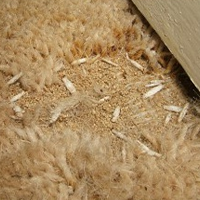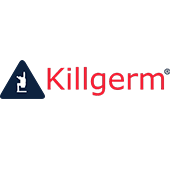Rodents

The presence of rodents in a building can be devastating to both business reputation and building fabric. Mice and rats need to gnaw constantly as their incisors (teeth) grow continuously throughout their lives. They can carry a number of diseases, which can be fatal to humans including tuberculosis, salmonella gastro- enteritis, rat bite fever, leptospirosis (weils disease) and numerous others, all of which can cause death. Droppings and fur will also contaminate food preparation surfaces and foodstuffs. Rodents are incontinent and consequently foul wherever they travel.
Rodents also breed at an alarming rate. Rats and mice breed up to 8 times a year and can have anything up to 16 offspring per litter (with rats up to 8), which left untreated can cause a major infestation.
The use of rodenticide, contact dusts, gels, baits and traps will, when used by a professional pest controller help prevent on-going rodent infestations. Rodenticide treatment is only part of the story,
more importantly, a thorough survey of the premises will determine where the infestation is coming from, the extent of infestation and exactly how to prevent possible further rodent problems.
Wasps/Hornets

Wasps do frequently build their nests indoors, both in attics and inside houses, however it is unusual to find a nest in a part of a house that is used regularly – but it does happen. Most of the time nests are built in lofts, sheds, gardens and garages etc.
If you are finding wasps inside your home on a regular basis, there is a good chance that you have a nest within your home. Wasps can squeeze through the smallest of gaps and can even get through the gap in down lights (flush fitting lights in the ceiling).
Hornet nests are similar to wasp nests and are made in the same way from chewed wood, the actual nest is slightly larger than a wasp nest, but will not contain as many insects. Hornets prefer to nest under cover and can build their nests in old tree stumps, thatch and also in underground (but this is rare) naturally people are wary of hornets because of their size, their sting is powerful but they are not as aggressive as normal wasps.
Sentinel Pest Control uses a powerful insecticide in a powerful dust or- liquid- based format. The dust or liquid is pumped directly into a nest or nest entrance where it is then carried further by the active, foraging wasps.
Cluster Flies

Cluster flies are common in the UK and are so-called as they hibernate in large numbers or clusters in buildings. There are usually only 2 generations of cluster fly each year (around Spring time and Autumn), but up to 4 generations in hot weather is possible. In summer and early autumn cluster flies are found in fields, but as the weather become cooler- they will find shelter in nooks and crannies in houses and other buildings they can often be found in large numbers (several thousand) within roof spaces. Often cluster flies return to the same building year after year. Large numbers of cluster flies hibernating together can produce a sickly smell and if warm enough, will fly around living areas where they are attracted to light. While this may cause a nuisance, cluster flies do not pose any risk to human health and their presence does not reflect poor hygiene.
Sentinel Pest Control will survey all buildings for the presence of bats (which are protected by law) before applying any treatment and will contact Natural England for further advice, should a colony be found.
Fleas

Fleas have been around for millions of years, sucking the blood of animals and humans. Fleas live on pets, mammals, in carpets and sofas as well as other household and farm items. In a typical room infestation, 5 constitutes fleas on pets, 10 % flea cocoons in the carpets, 35 % flea larvae and the remaining 50 % flea eggs again in the carpets.
Flea infestations go through the following stages: adults, pupae, larvae and eggs and in order to rid your house completely of this biting insect, all stages must be eradicated. Resistive pupae and larvae grow on to become adult fleas within a few weeks and this can be happening even where the adult fleas have been killed. Fleas must be removed from all stages in their life cycle, to protect your family and pets.
Contact Sentinel Pest Control now for advice on how to correctly treat flea infestations.
Bed Bugs

Bed bugs are small insects that feed on human blood; they are usually active at night when people are sleeping.
Adult bed bugs have flat, rusty-red oval bodies, no wings and are about the size of an apple seed. They are big enough to be easily seen, but hide in mattresses, bedding, cracks in furniture, floors, or walls. When bed bugs feed, they swell and become brighter red. They can live for several months to over a year without feeding. They don’t jump or fly, they crawl and move around at about the same speed as an ant.
Bed bugs can hide anywhere but usually close to where people sleep. You can detect bed bugs early by inspecting your bed and bedding each time you remove the sheets for washing. Check around the edge of the mattress base, in seams and underneath buttons or tags. Remove the thin cover material on the underside of your bed (a common hiding place) and look inside. If you have a headboard, footboard or bed frame, carefully inspect the corners, cracks and screw holes for bed bugs.
Contact Sentinel Pest Control now for advice on how to correctly treat and get rid of bed bugs.
Textile pests/Clothes Moths

Pests such as clothes moth and carpet beetles can cause permanent damage to irreplaceable textiles, furnishings, costumes and other valuable(but vulnerable) items. It is not unusual to find these pests in buildings where birds are nesting in the roof. They can often be found in the loft where birds are nesting or cuts of carpet and clothing are stored.
Wool, fur and feathers consist primarily of keratin which is one of the most indigestible proteins, however some insect larvae are specially adapted for feeding on this diet and special conditions in their gut enable them to break down the sulphur linkages in keratin and thus render it digestible.
Consult Sentinel Pest Control now for advice on how to correctly treat to get rid of textile pests.
Pigeon/Bird proofing

Pigeon control is important due to the damage and disease these problem birds often create. The uric acid in pigeon faeces is highly corrosive and can cause extensive damage to metals and other substrates it sits on for long periods. Debris from flocks of pigeons often builds up, backing up gutters and drains, often causing flooding and roof damage. Nesting materials and other debris has caused failures in machinery, especially rooftop air conditioning units which are a prime nesting spot for pigeons. Other frequent pigeon problems include the consequences of slip- and- fall liability from faeces or debris, plus an unclean, dirty company image. The bacteria, fungal agents and ectoparasites found in pigeon droppings are responsible for a host of serious diseases, including histoplasmosis, encephalitis, salmonella, meningitis, toxoplasmosis and more. Many companies also retain significant clean-up costs due to the pigeon problems they don’t resolve.
Sentinel Pest Control offers proactive prevention services for birds and many more other problem pests such as ants, crawling and flying insect moles and many more…





